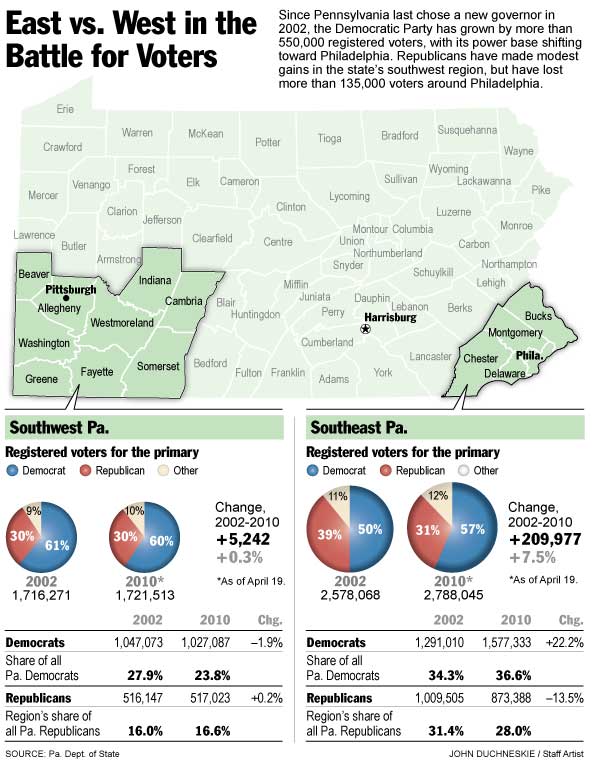In eight years since Pennsylvanians last chose a new governor, the landscape of each major political party has shifted in ways that could have some impact on the May 18 primary.
The Democratic Party that picked Ed Rendell as its candidate in 2002 has become a bigger tent. It has grown by 550,000 members, to more than 4.3 million, and its center of gravity has tilted slightly toward the Philadelphia region. Its voters are a bit younger, a bit more liberal.
The Republican Party has changed in some opposite ways.
Its ranks have shrunk by 103,000 voters, to 3.1 million, and its geographic core has shifted slightly west, toward Pittsburgh. With a loss of many moderates, and a failure to attract many new voters, it has become older, more conservative.
These changes, though subtle, figure into the campaigns being mounted by each of four Democrats and two Republicans running to succeed Rendell, who after two terms in office cannot seek reelection.
http://www.philly.com/philly/news/politics/20100426_Political_parties_have_changed_since_2002.html